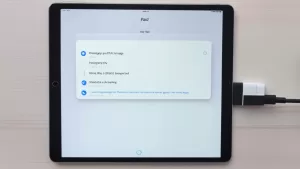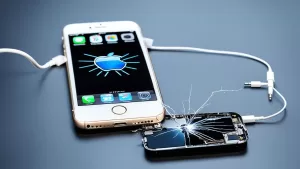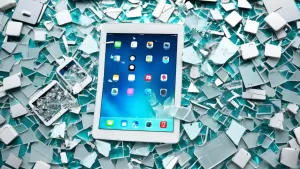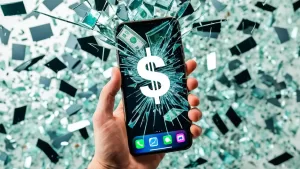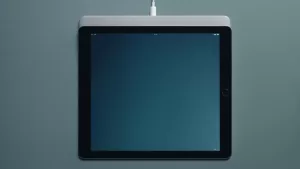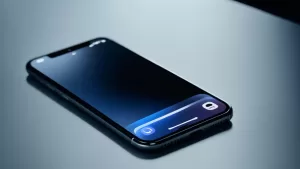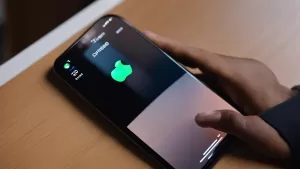Your phone could easily succumb to issues after updating to a major software version. This might be due to bugs and glitches embedded on software patches. One commonly observed problem after an iOS update is a device that keeps on restarting. This is a case where you’re using your phone as usual but suddenly, it restarts automatically. If this is the case that you’re experiencing on your iPhone XS Max after updating to iOS 13, then the details on this article might help you. Here are some steps that will walk you through on how to fix if your phone keeps on restarting by itself. Read on for more information.
Before we move on to our troubleshooting, if you happen to find this post while looking for a solution to a different problem, then visit our iPhone XS Max Help Guides page for we have already addressed some of the most common issues with this device. We may have already published articles that could help you fix your problem. Find issues that are similar to yours and feel free to use our solutions.

First solution: Reboot your iPhone XS Max.
Normally, your phone will still adjust to the new software version after the update. This might cause some apps to go rogue due to the transitioning. While waiting for the phone’s system to get accustomed with iOS 13, performing a soft reset on your iPhone XS Max might expedite the implementation of changes and fix rogue apps. Here are the steps on how it’s done:
- Press and hold the Power/Side button and either of the Volume buttons simultaneously for a few seconds.
- Release both buttons once Slide to Power off prompt appears on the screen.
- Drag the Power off slider to the right to turn off your phone.
- After 30 seconds, press and hold the Power/Side button again until you see the Apple logo.
In case that you’re not able to execute the steps when the phone reboots automatically, force restart will be your alternative option to reset your iPhone XS Max. This procedure provides the same benefits as a soft reset, but the execution is different as you’ll use hardware keys instead of the touchscreen to turn off your device. Here’s how:
- Press and release the Volume Up button quickly.
- Press and release the Volume Down button quickly.
- Finally, press and hold the Power/Side button until the Apple logo appears on your screen.
Just allow your phone to complete the reset process and use it as normal to check if it will still restart by itself.
Second solution: Clear all background apps on your iPhone XS Max.
Apps that have been used recently are left suspended in the background unless you forcibly close them. These apps can easily acquire random bugs while they’re running in the background for an extended period. These glitches might cause the apps to go rogue, causing your iPhone XS Max to restart by itself. To rule out errant apps, closing all apps in the background might help you in fixing the problem. Simply follow these steps:
- Swipe your finger up and then pause from the Home screen.
- Swipe left or right to navigate through the apps preview.
- Then swipe up on each app’s preview to close individual background apps.
After clearing all apps that are running in the background, reboot your device to refresh the system and check if the issue has been rectified.
Third solution: Reset all settings on your iPhone XS Max.
An iPhone XS Max that keeps on restarting by itself after an update might have been due to incorrect or altered settings. If the problem has been observed firsthand right after the iOS 13 update, there’s a great tendency that the settings have been overridden by the new software. To ensure that your iPhone is getting the right settings, performing an all settings reset will help you out. Doing so will clear all customized settings on your device and revert them to the default configurations. Just follow these steps should you wish to try it:
- Access Settings from the Home screen.
- Tap General.
- Scroll down to and then select Reset.
- Tap the Reset All Settings option.
- Enter your device passcode once prompted.
- Then tap to confirm all settings reset.
Your phone will reboot automatically after the reset all settings is completed and then revert to the default options and values. This process will not delete any saved data on your phone so there’s no need to worry about losing personal information.
Fourth solution: Factory reset (master reset) your iPhone XS Max.
If reset all settings failed in fixing the problem, you might need a more competent solution to deal with the issue. Stubborn glitches that cannot be fixed by the previous steps can be expelled with a master reset. Doing so will erase all contents on your iPhone including personal information and restore to the default factory configurations. It is recommended to create backups via iTunes or iCloud before performing the procedure. Just follow the steps below whenever everything is set:
- Access Settings from the Home screen.
- Tap General.
- Scroll down to and then select Reset.
- Tap the Erase all contents and settings option.
- Enter your device passcode once prompted.
- Then tap to confirm all settings reset.
After the factory reset, your phone will restart automatically. Allow your device to complete the restart process and then set it up like a new one to use it again.
Fifth solution: Perform a recovery mode restore on your iPhone.
Complex system errors that’s causing your iPhone XS Max to restart by itself might be due to a major iOS flaw. Simple solutions may not work on this case and you’ll need an advanced one to deal with the problem. Performing a recovery mode restore via iTunes will permanently delete all data on your phone. This might be the solution that could fix the issue permanently as this will rectify fatal system bugs and glitches. In order to carry out this process, you’ll need to prepare a Mac or Windows computer with the latest iTunes installed. Also ensure that your computer runs on the latest operating system that is compatible with your iPhone XS Max. If all requirements are met, connect your device to the computer using the Apple-supplied USB/lightning cable. Then allow iTunes to sync with your iPhone and backup files, if possible. Once the backup is secured, follow these steps to put your iPhone XS Max in recovery mode and then restore iOS in iTunes:
- Press and release the Volume Up button quickly.
- Press and release the Volume Down button quickly.
- Then press and hold the Power/Side button once prompted with Connect to iTunes screen. Do not release the button when Apple logo appears as you will need to enter recovery mode state.
- Once you enter the recovery mode, you’ll see either Update or Restore option.
- Select Restore if you want to reinstall and download iOS on your device without erasing data.
Do not disconnect your phone and keep it connected until the entire restore process is finished.
Alternative solution:
Another advanced solution that you can try and might help you in dealing with the issue is a Device Firmware Update (DFU) mode restore. This restore process will put your device in an advanced state that allows iTunes to sync even when the bootloader is not activated. You may refer to the steps below if you want to give this a shot:
- Connect your iPhone XS Max to the computer using the Apple-supplied USB/lightning cable.
- Once connected, press and hold the Power/Side button for at least 3 seconds.
- Continue pressing the Power/Side button and then press and hold the Volume Down button for at least 10 seconds. Make sure not to hold the buttons too long so that Apple logo will not appear. If ever it happens, redo the steps.
- Release the Power/Side button but continue holding the Volume down button for another 5 seconds.
- If the screen shows nothing and stays black, this means that you have successfully entered DFU mode. Wait until an alert message will prompt on your computer screen. Once you see “iTunes has detected your iPhone in recovery mode. You must restore this iPhone before it can be used with iTunes” message, follow the on-screen instructions to complete the DFU restore process.
If the process is successful, perform a force restart on your device.
If all the solutions failed in fixing the problem on your device, this might be a system bug brought by the recent software update. This might be fixed with a new software roll out. In that case, contacting Apple support will be your next step. They can provide you with additional information as well as official recommendations on how to fix an iPhone XS Max that keeps restarting by itself after iOS 13 update. If you know the nearest Apple service center in the area, you can also bring your iPhone to their location and have it checked by their technician. It might be a hardware issue that’s causing the problem.
Connect with us
We are committed to helping our readers fix the problems with their phones as well as learn how to properly use their devices. So, if you have other issues, you may visit our Help Guides page so you can check by yourself the articles we’ve already published that contain solutions to common problems. Also, we do create videos to demonstrate how things are done on your phone. Visit our Youtube Channel and please subscribe to it. Thanks.
